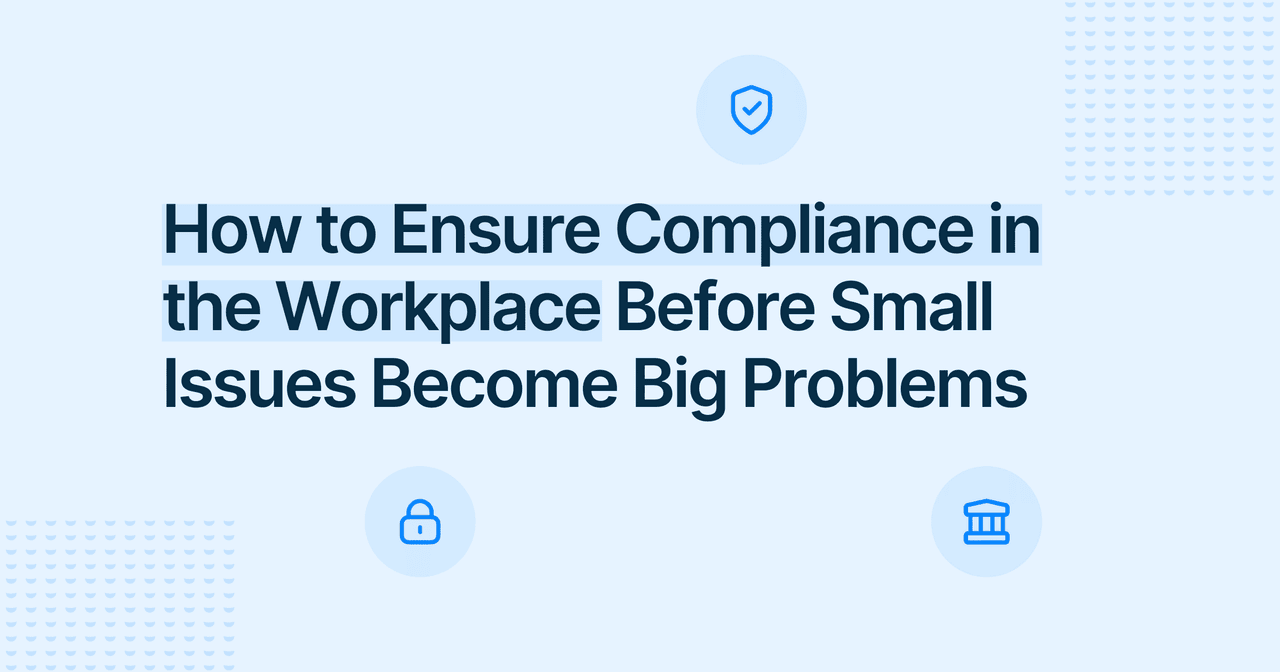



Discover the benefits of a transparent organization!
Try our free platform and strengthen the culture of openness in your team.
Whistleblowing

Yeva Bartkiv
Copywriter
Published
2025-07-22
Reading time
5 min


Table of contents
Subscribe to our newsletter
Unresolved employee grievances can severely damage morale, compliance, and productivity. Whether it stems from unfair treatment, poor working conditions, or a policy violation, a workplace grievance should never be ignored.
This comprehensive guide is designed for HR professionals, managers, team leaders, and small business owners who need to understand how to handle employee complaints effectively.
We'll walk through the grievance procedure, explore examples of grievances in the workplace, and offer actionable tips for investigating and resolving them.

A grievance in the workplace is a formal complaint raised by an employee about concerns that affect their job satisfaction, performance, or well-being. These concerns may relate to unfair treatment, discrimination, conflict with a coworker, or breaches of company policies.
According to ACAS and standard HR definitions, a grievance is "a concern, problem, or complaint that an employee raises with their employer." These can range from minor irritations to serious allegations requiring legal advice.
Knowing the types of grievances in the workplace is essential for proactive resolution. Common examples include:
Understanding the causes of grievances in the workplace can help prevent them from escalating, and addressing them is key to managing them in the workplace. Common causes include:

An effective grievance policy ensures consistency, compliance with legal requirements, and timely responses to employee concerns. It outlines how to file grievances, defines roles in the grievance process, and ensures everyone knows what to expect.
Make your workplace grievance policy visible in the employee handbook and during the onboarding process.
Let's walk through a standard grievance procedure in the workplace, incorporating best practices from the ACAS Code and real-world HR experience.
Employees can file a grievance verbally or in writing. However, a written grievance is preferred to ensure clarity and documentation.
This stage should be acknowledged within 3 - 5 working days.
The employer should arrange a grievance meeting with the employee promptly. The purpose is to:
Employees should have the right to bring a union representative or colleague for support.
A thorough investigation is critical to ensure a fair outcome. Depending on the complaint, the investigation may involve:
An impartial HR representative or external investigator should lead this stage.
After reviewing all the relevant information, the organization must decide on the next steps. Potential outcomes include:
Document and communicate the decision within the outlined timeframes.

If the employee disagrees with the outcome, they can initiate the appeal process. This should involve:
This protects the employee’s rights and builds confidence in the system.
Every grievance should end with a documented resolution process and a follow-up after a few weeks to ensure closure. This is crucial for maintaining a healthy work environment and preventing recurrence.
Grievance: An employee claims their immediate supervisor overlooked them for promotion in favor of a less experienced coworker.
Process: A formal grievance was filed. The HR department conducted a thorough investigation into the grievance, reviewed relevant emails, and interviewed key witnesses.
Outcome: Disciplinary action was taken against the supervisor, and a new promotions framework was introduced.
Grievance: An employee raised a formal complaint about unsafe warehouse equipment.
Process: The company initiated a grievance procedure, halted use of the machinery, and retrained staff.
Outcome: Improved safety standards, documented inspection routines, and no further employee complaints.
Often resolved through direct discussion between the employee and manager. Useful for minor interpersonal issues or misunderstandings.
Triggered when informal methods fail or the issue is severe (e.g., legal, safety, harassment). Follow a documented formal grievance procedure.
Understanding types of workplace grievances helps organizations respond appropriately.
If your company has a collective bargaining agreement, union grievances may follow a slightly different path.
Ensure your grievance policy aligns with union protocols and relevant legal frameworks.
To handle grievances effectively, the HR case management strategy should:
Additionally, provide training to managers on how to effectively address grievances in the workplace and foster a respectful workplace culture.

Proactive steps can prevent many issues before they escalate:
Dealing with employee grievances can be challenging, but having a reliable, fair, and structured grievance process in the workplace makes all the difference. It safeguards your company legally and enhances trust and morale across the entire team.
Interested in seeing how FaceUp can help your organization streamline the grievance process? Book a demo today and discover how our solution supports transparency, compliance, and employee trust.




Try our free platform and strengthen the culture of openness in your team.
Keep Reading

Alaa El-Shaarawi2025-12-087 min
Workplace Environment

Alaa El-Shaarawi2025-12-058 min
Legal & Compliance

Alaa El-Shaarawi2025-12-048 min
Legal & Compliance

Alaa El-Shaarawi2025-12-037 min
Legal & Compliance